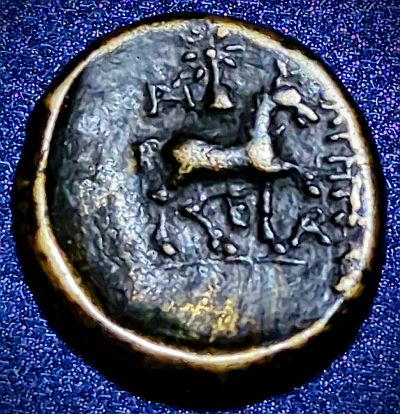A captivating coin from an intriguing time
Phrygia
Recently, we looked at a coin from ancient Lydia, a kingdom in the west of modern-day Turkey, which formed after the fall of the Hittite empire. Lydia later fell to the Greeks, Alexander the Great, the Seleucid’s, Rome and Persians. Phrygia was the empire to the east of Lydia, and basically went through the same progression. The Cimmerian empire destroyed the Phrygian capital of Gordium around 675 B.C. Following this, the Lydian’s expelled the Cimmerian’s, and then took over Gordium themselves.
Legendary kings
Although you may not have heard of Phrygia before, you’ve very likely heard of one of their most famous kings, Midas. The Midas who turned everything he touched to gold. While King Midas himself was a genuine historical figure, there isn’t as much proof about his golden touch. He didn’t get his hands on today’s coin in any case! (Although, spoiler alert: At the end, everything he touched turned back to normal again anyway. So even if he HAD touched my coin, it still wouldn’t have stayed gold). In any case, Midas ruled in the late 8th century B.C., some roughly 700 years before my coin was struck.
Midas wasn’t the only famous Phrygian ruler. His father, King Gordius, also has a place in history. Gordius had a wagon, it’s yoke tied with what one Roman historian later described as “several knots all so tightly entangled that it was impossible to see how they were fastened.”
in 333 B.C. the Macedonian conqueror marched his army into the Phrygian capital of Gordium. Upon arriving in the city, he encountered an ancient wagon, its yoke tied with this impossible knot. An oracle had declared that any man who could unravel its elaborate knots was destined to become ruler of all of Asia.
According to the ancient chronicler Arrian, the impetuous Alexander was instantly “seized with an ardent desire” to untie the Gordian knot. After wrestling with it for a time and finding no success, he stepped back from the mass of gnarled ropes and proclaimed, “It makes no difference how they are loosed.” He then drew his sword and sliced the knot in half with a single stroke.
Obverse

Alas, neither Midas, nor the Gordius knot really, er, tie, into our coin directly. Most descriptions simple note that the obverse of the coin is of a “Helmeted male head right.”
I did find one reference to a similar coin naming the figure as “Ares“, the Greek god of war. The references I can find of Ares though, describe how he helped the Amazones of the Doiantian plain in their war with Phrygia. Which seems to me an interesting choice for a Phrygian coin. Although by the time this coin was struck, the area was either Greek (before 133 B.C.) or Roman, so maybe Ares was more accepted? As with many ancient coins, the dates recorded for this coin (200 B.C. – 1 B.C.) are more indicative that this piece was struck sometime during the first or second centuries B.C., rather than that it was a piece struck continuously during those exact years.
Reverse

Wildwinds describe the reverse as “EΠIKTHTEΩ, horse walking right, one front leg raised, pileos surmounted by star above. MH monogram in upper left field, AΡ monogram in lower right field, E beneath horse.” (Mionnet Supp VII, 333).
A “Pileos” is “a pointed or close-fitting cap worn by ancient Romans”.
I haven’t found a specific translation or meaning of “EΠIKTHTEΩ”. However, this coin came from “Phrygia Epictetus (or Epikteteis). There isn’t a lot of information about this area except for the British Museum note: “An area of north-western Phrygia. The borders of Phrygia and neighbouring Mysia (to the north) fluctuated a great deal throughout the Classical period and it is not entirely clear when they were defined. The area which came to be known as Phrygia Epictetus was probably originally part of Mysia.”

Like many Hellenistic coins, this one is quite thick compared to its size – It is 19mm diameter and around 3mm thick.


Leave a Reply